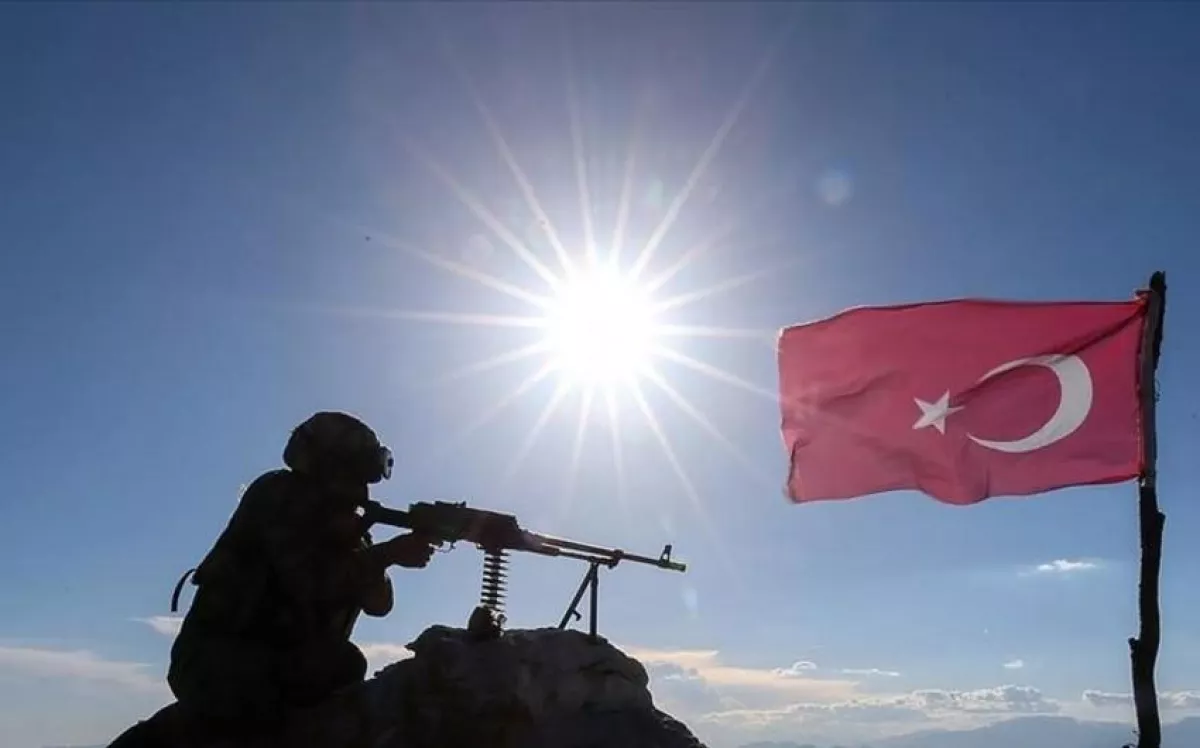New balance of power in Middle East: Türkiye as a regional superpower Article on The Jewish Press
The American newspaper The Jewish Press published an article by Israeli journalist Rachel Abraham, devoted to recent events in the Middle East. Caliber.Az offers its readers an analysed version of the piece.
The geopolitical landscape of the greater Middle East is undergoing transformative shifts, shaped by the waning influence of traditional powerhouses like Russia and Iran and the simultaneous rise of Türkiye and its Turkic allies. This changing dynamic reflects broader implications for regional and global balances of power.
Russia's waning influence amid the war in Ukraine
Russia’s involvement in the Syrian civil war underpinned its broader Middle Eastern ambitions. By supporting Bashar al-Assad’s regime, Russia positioned itself as a key player in regional politics. However, since 2022, Moscow’s strategic calculus has been reshaped by the war in Ukraine. The conflict has drained Russian military resources, leading to a reallocation of assets and diminished attention toward other regions. This strategic realignment has weakened its ability to support Assad and maintain influence in Syria.
Russia's military setbacks—losses of senior officers, reliance on outdated equipment, and logistical inefficiencies—exemplify its diminished capacity to respond effectively to Middle Eastern developments. Consequently, Assad's reliance on Tehran has deepened, altering the dynamics within Syria and exposing vulnerabilities in the Russia-Iran partnership.
Iran’s strategic challenges
Iran, long a dominant actor in Syria and Lebanon, faces significant challenges. While Tehran continues to provide support to Assad via its proxies, its resources are stretched thin, particularly as its regional ally Hezbollah has suffered crippling setbacks in recent confrontations with Israel. These losses have weakened Hezbollah's operational capabilities, reducing its capacity to project power in Syria and elsewhere.
Moreover, Iran’s efforts to counterbalance its declining influence in the Middle East by seeking stronger ties with Armenia in the South Caucasus illustrate its strategic pivot. Tehran views the South Caucasus as a critical trade route to circumvent sanctions. However, its ambitions clash with Türkiye and Azerbaijan, whose growing influence in the region is bolstered by their victory in the Second Karabakh War and infrastructure projects that challenge Iran’s economic and strategic interests.

Türkiye’s regional ascendancy
Türkiye’s strategic positioning as a NATO member with one of the strongest militaries in the region has been pivotal in tilting the balance of power in Syria. By backing Syrian rebels, Ankara has emerged as a critical force opposing Assad, Iran, and Russia. Furthermore, Türkiye’s leadership within the Organization of Turkic States and its investments in the Middle Corridor underscore its aspirations to become a regional superpower.
Azerbaijan, Türkiye’s close ally, plays a crucial role in these developments. By enhancing infrastructure and trade routes connecting East and West, Azerbaijan strengthens Turkic cooperation and diminishes Iran’s influence in the South Caucasus. Together, Türkiye and Azerbaijan represent a formidable bloc reshaping regional dynamics.
The decline of Iranian influence
Iran’s declining regional clout is not limited to geopolitical setbacks. Domestically, the regime faces internal dissent, epitomized by the “women, life, freedom” protests. The regime’s inability to address the grievances of its populace, coupled with mounting external pressures, makes Tehran vulnerable to further instability. A resurgence of such protests could destabilize the Iranian regime and contribute to the broader weakening of the Russia-Iran axis in the Middle East.
The emerging Turkic-led order
The developments in Syria and the South Caucasus highlight the emergence of a Turkic-led regional order. This shift is characterized by the ascent of Türkiye, Azerbaijan, and other Turkic states, which are capitalizing on economic and geopolitical opportunities. The Middle Corridor, a critical trade route linking Europe and Asia, symbolizes the growing strategic importance of this bloc.
As Iran and Russia struggle to maintain their foothold, the ascendancy of Türkiye signals a realignment of power in the greater Middle East. This transformation holds the potential to redefine the region’s political and economic trajectory, diminishing the influence of traditional powers while strengthening the Turkic world.
Conclusion
The greater Middle East is witnessing a historic transition, driven by the erosion of Iranian and Russian influence and the rise of Türkiye and its allies. These changes underscore a broader shift away from the traditional axes of power, presenting new opportunities and challenges for regional stability. Should internal dissent in Iran lead to regime change, the Middle East could enter a new era unaligned with either Moscow or Tehran, paving the way for a Turkic-led regional order.








